The
Katas Raj Temples (
Punjabi,
Urdu:
کٹاس راج مندر), also known as
Qila Katas(
قلعہ کٹاس),
[2] are several
Hindu temples connected to one another by walkways.
[2] The temples form a complex surrounding a pond named
Katas which is regarded as sacred by Hindus.
[3] The complex is located in the
Potohar Plateau region of
Pakistan's
Punjab province. The temples are located near the town of
Kallar Kahar, and are near the
M2 Motorway.
The temples' pond is said in the
Puranas to have been created from the teardrops of
Shiva, after he wandered the Earth inconsolable after the death of his wife
Sati.
[3][2] The pond occupies an area of two kanals and 15 marlas, with a maximum depth of 20 feet.
The temples play a role in the Hindu epic poem, the
Mahābhārata,
[4] where the temples are traditionally believed to have been the site where the
Pandava brothers spent a significant portion of their exile.
[3] It is also traditionally believed by Hindus to be the site where the brothers engaged in a
riddle contest with the
Yakshas, as described in the
Yaksha Prashna.[5][4][6] Another tradition states that the Hindu deity
Krishna laid the foundation of the temple, and established a hand-made
shivling in it.
The temples were visited by India's former deputy prime minister
Lal Krishna Advani in 2005. In 2006, the Pakistani government began restoration works at the temples, with further improvements announced in 2017.
Location
Katas Raj is located in Punjab's
Salt Range at an altitude of 2,000 feet.
The Katasraj Temple complex is located near
Kallar Kahar, and is located at an altitude of 2,000 feet.
[3] It is approximately 100 kilometres away by road from another important Hindu pilgrimage destination - the
Tilla Jogian complex. Katas Raj is located near the interchange for the town of
Kallar Kahar off the
M2 Motorway which links
Islamabad to
Lahore. The complex is located alongside the road that connects Kallar Kahar to Choa Saidan Shah near the village of Dulmial.
Etymology
The name of the temple complex is believed to derive from the
Sanskrit word
kataksha, meaning "tearful eyes."
[6] The pond was originally referred to as
Viskund, or "poison spring", but was later referred to as
Amarkund, Chamaskund, and finally
Katakshkund, meaning "Spring of tearful eyes."
[7] The pond in Urdu and Persian is referred to as
Chashm-e-Alam,
[2] meaning "Sorrowful/Tearful Eyes."
History
Prehistoric
The
Salt Ranges
have archaeological remains still hidden underground. A number of
bones of the limbs and vertebrae of animals have been found at some
nearby sites. Prehistoric axes and knives made of granite, and artifacts
like terracotta bangles and pottery have also been unearthed at the
Katasraj site. The latter have been found to be similar to those
excavated in
Harappa, but have not been dated.
[8]
Hindu tradition holds that the temples date from the era of the
Mahabharata, and is believed to be where the
Pandava brothers spent a large portion of their exile.
[4] It is also believed by Hindus to be the site where the
Pandavas engaged in a
riddle contest with the
Yakshas, as described in the
Yaksha Prashna.[4][6]
Founding
The 4th century CE Chinese monk,
Faxian, described a temple at Katas Raj in his travelogues.
[6] The 7th century CE Chinese traveler
Xuanzang visited the area and reported the existence of a Buddhist
stupa dating to the era of the 3rd century BCE king,
Ashoka.
[4][5] The stupa was reported to be 200 feet tall, and surrounded by 10 springs.
[4]
Following the collapse of the Buddhist empire of
Gandhara, Hinduism gained traction in the region under the reign of the
Hindu Shahis beginning around the 7th century CE.
[4] The Hindu Shahis established Hindu temples at Katas Raj from the mid 7th to 10th centuries,
[4][6] though the British engineer
Alexander Cunningham dated the shrines to around 66 BCE.
[6] The Hindu Shahi empire also funded construction of several other temples throughout northern Punjab and the
Potohar plateau,
[4] including the nearby
Tilla Jogian, and
Kafir Kot in
Khyber Pakhtunkwa province.
Early
View of the temple complex in 1875
The founder of the
Sikh faith,
Guru Nanak, is believed to have visited the Katas Raj Temples, as the site became a popular destination for ascetics.
[9] The Sikh emperor
Ranjit Singh also regularly performed pilgrimage to the site.
[10] He visited the site for the
Vaisakhi festival in 1806,
[11] in December 1818,
[12] and again in 1824.
[12]
The complex was a popular pilgrimage site for Hindus prior to the 1947
Partition of British India, with large numbers visiting for
Shivratri.
[9] Following Partition, the local Hindu community left the region for the newly established
Republic of India.
The relationship of Hindus with local Muslim population was good, and
local Muslims accompanied Hindus to the nearby town of Choa Saiden Shah,
from where the local Hindu population departed for India. Indian
pilgrims continued to visit the temple for the Shivratri festival until
the
Indo-Pakistani War of 1965, after which Indian pilgrims were barred from visiting again until 1984.
[13]
Modern
The
temples fell into disrepair over the decades following Partition, and
suffered neglect. Pakistani Hindus would continue to occasionally visit
the site, but were unable to maintain the expansive complex.
[9] The pond was polluted with litter, while local villagers would also use the pool for recreation.
[9] Indian Hindu pilgrims were forbidden to visit the site in 1956, 1960,
[6] and after the Indo-Pakistan war in 1965.
[13] India pilgrims were not permitted to visit the site again until 1984.
[13]
India's former Deputy Prime Minister
Lal Krishna Advani visited the temples in 2005,
[14] and expressed displeasure at the site's dilapidated state.
[9] In 2005 Pakistan proposed to restore the temple complex,
[15]
while in 2006 the restoration project began in order to clean the
sacred pond, paint and restore some temples, and installation of
informational blue boards around the temple complex.
[9] 300 Indian Hindus visited the site for the
Shivratri festival in 2006,
[9] which for a short time became an annual tradition for some Indian pilgrims, though Indians stopped coming after the
2008 Mumbai attacks.
[9] 2,000 Pakistani Hindus resumed the tradition of celebrating
Shivratri at the temple in 2010,
[9] and another 2,000 in 2011 with visitors coming from as far as
Karachi.
[13] A wedding for Hindu couples was arranged during that year's
Shivratri festival for couples from
Khyber Pakhtunkhwa province whose families had lost much of their property in the
2010 Pakistan floods.
[13]
In January 2017, Pakistan's government began installation of
shikharas on the temples.
[16] In February 2017, 200 pilgrims from India traveled to the temple to participate in the
Katas Raj Dham festival.
[17]
Religious significance
The complex consists of several temples and associated structures.
The pond at Katas Raj is said to have been created from the teardrops of the Hindu deity
Shiva, following the death of his wife
Sati.
The temples are considered to be the second most sacred site in the historic
Punjab region, after the temple at
Jwalamukhi in modern
Himachal Pradesh.
[6]
The temples derive their holiness from the legend that following
the death of his wife Sati, the Hindu god Shiva wandered inconsolably,
while some of his tears collected in two ponds, one of which is the pond
around which the Katas Raj Temples are set,
[4][3] while the other is at
Pushkar, near the famous Sufi pilgrimage center of
Ajmer. Another version of the legend mentions the two pools at Katasraj and
Nainital. Another version of the Shiva legend involves the death of Shiva's horse Katas instead of that of Sati his consort.
The Katasraj temple complex is traditionally believed to date back to the
Mahabharata era. Many legends are associated with the temples. The five Pandava brothers, mentioned in the
Mahabharata, are said to have stayed here for a large part of their exile.
[7] The complex is traditionally believed to be the site where the Pandava brothers were challenged by the
Yaksha before being able to drink from the pond.
[2] Four of the brothers failed, and were rendered lifeless by the Yaksha. The fifth brother,
Yudhishthira, engaged the Yaksha in a riddle contest, and defeated him with his wisdom,
[6] thereby bringing his brothers back to life.
Some legends also state that very first Shiva Ling (Sihv-Ling)
was in Kattas. some old manuscripts also consider Katas as the janam
bhoomi (birthplace) of Hindu
incarnation Rama, as well as that of
Ayodhya;
but this has become quite controversial.The oral tradition by local
Hindus never mentioned it as being Rama's birthplace or celebrated in
annual rituals.
Sacred pond
The pond in the complex is believed to be filled with
Shiva's tears after the death of his wife
Sati. The water in the pond is of high clarity.
[7] The water and are believed to wash one of ones own sins,
[9] as the pond is associated with Shiva.
[7]
In 2012, and again in 2017, water levels in the pond were noted to
decrease because of water usage at a nearby cement factory, as well as
the plantation of water-avid eucalyptus trees, that had lowered the
area's water table.
[18] After the 2012 episode, the local cement factory was shut down by government authorities in order to restore water levels.
[18]
Architecture
Temples at Katas Raj display characteristics of Kashmiri Hindu temples.
[7]
Decorative artwork adorns the ceiling of the Ramachandra Temple.
The Katas site houses the
Satgraha, a group of seven ancient temples, remains of a
Buddhist stupa, five other medieval temples,
havelis scattered around a pond considered holy by Hindus.
[19]
The temples at Katas are mostly constructed on square platforms.
The elevation of the sub shrines seems to form a series of cornices with
small rows of pillars, crowned by a ribbed dome.
[20] The seven temples were built in an architectural style similar to Kashmiri temples,
[7] with
dentils, fluted pillars, trefoil arches, and rooflines that are pointed.
[7]
Ramachandra Temple
The
Ramachandra
Mandir is situated to the east of the Hari Singh Haveli and is closed
from all sides except for an entrance on the east. The double-storied
structure has eight rooms of various dimensions on the ground floor and a
staircase at the south leading to the first floor. The mandir has two
jharokas (balconies) that have been severely damaged.
Hanuman Temple
The
Hanuman
Mandir is on the western extreme of a high rectangular enclosure with
entrances on the south and the north. The temple's ceiling is
undecorated, and lime-plastered.
Shiva Temple
The
Shiva
temple is also built on a square platform. Its entrance is a recessed
round arch with faint cusps and a rectangular opening to the north.
Hari Singh Nalwa Fort and Haveli
A small fort cum residence was built during the reign of
Hari Singh Nalwa, and was built for his use as a fort and residence.
[21] The fort itself is located on a small hillock and overlooks the entire temple complex.
[21]
The fort is rectangular and features four bastions, one in each
corner of the fort. The walls are approximately 5 metres tall, and
features an entryway in the western wall of the fort. The central
portion of the fort features a small courtyard, around which an arched
veranda is found. The interior rooms were not decorated.
[21]
Conservation
For decades the temple complex was in bad state. The holy pond was littered with garbage, while the
murals
inside the temples disappeared due to the ravages of time and the
neglect of the authorities. The temples were visited by India's former
deputy prime minister
Lal Krishna Advani in 2005,
[14] and in 2006 Pakistan proposed to restore the temple complex.
[15]
Murtis (idols) of Hindu gods were placed in the seven temples,
[15] at a cost of Rs. 51.06 million. A three-member archaeological team visited
India,
Sri Lanka and
Nepal to collect murtis of various Hindu gods.
[2]
As of 2012, the temple pond was drying up as ground water had been diverted for industrial purposes,
[22] though the local cement factory was temporarily shut down to restore water levels.
[18] In January 2017, Pakistani authorities began the installation of
shikharas on the temples,
[23] and installed a water filtration system to provide potable water for pilgrims.
[24] By May 2017, water levels in the sacred pond were again noted to be falling.
[18]
In 2016, the temple hit the national limelight after its
centuries-old water pond ran dry, attributed to the depletion of
groundwater owing to the establishment of four major cement factories in
the area. After the menace was reported, the
Supreme Court of Pakistan took a
suo motu notice and started hearing the case in November. During the course of proceedings,
Chief Justice of Pakistan Mian Saqib Nisar
remarked that cement factories were consuming water worth millions of
rupees without paying their dues. He stated that taxes should be imposed
on the factories and if the government would not do so, the court would
take the matter into its hands.
In 2017, while hearing the case, Nisar stressed, "This temple is
not just a place of cultural significance for the Hindu community, but
also a part of our national heritage. We have to protect it."
[25]
The bench of judges during the hearing of the case also expressed
displeasure at the absence or displacing of idols from the temples,
demanding to know why there were no statues in the temples of Shiri Ram
and Hanuman. The bench was told that a former chairman of
Evacuee Trust Property Board (ETPB) earned millions of rupees from corruption [during his tenure] and then ran away [from Pakistan].
[26]
Katas Raj Temples
کٹاس راج مندر
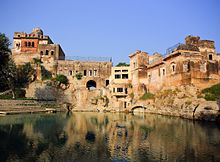
The temples surround a pond regarded as sacred by Hindus
In May 2018, the top court announced its verdict on the case by
ruling that the cement factories would have to source water from
elsewhere immediately, and in the meantime, pay the
Government of Punjab, Pakistan for the water they draw.
[27] It told Bestway and DG Khan cement factories to fulfill their water needs from any other alluvial source such as river
Jhelum.
However, the factories disobeyed court orders and the authorities in August 2018, cut the water supply.
[28]
However, the fate of the temply pond is not known as of September 2018,
as industrial sourcing of groundwater in the area continues by two
other cement factories - Gharibwal Cement and Dandot Cement, located in
the area, but outside the red zone.




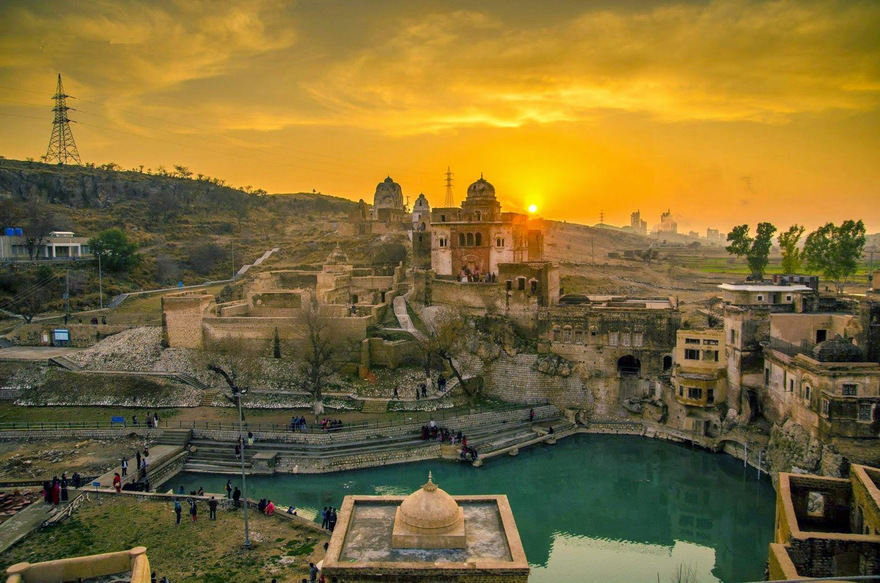
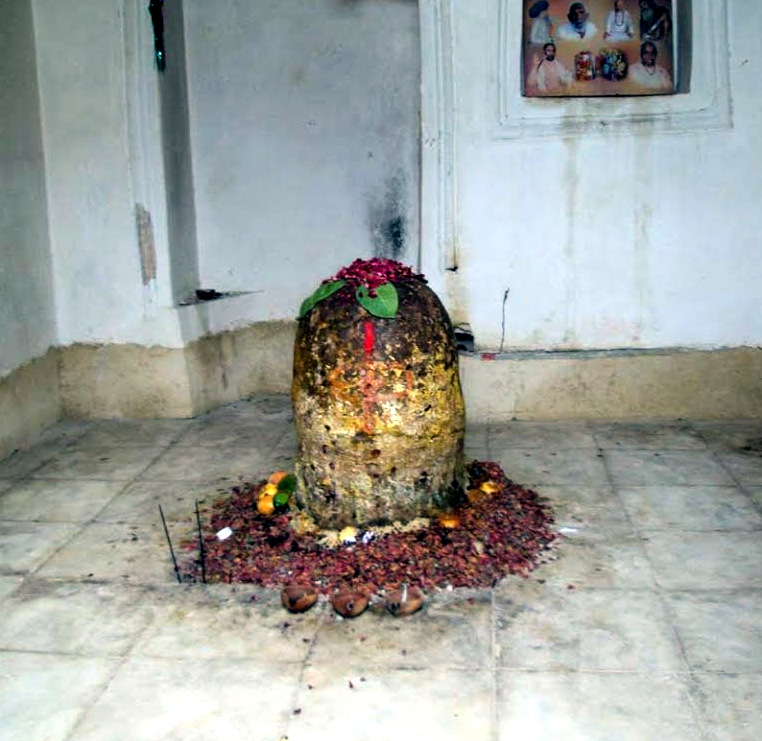

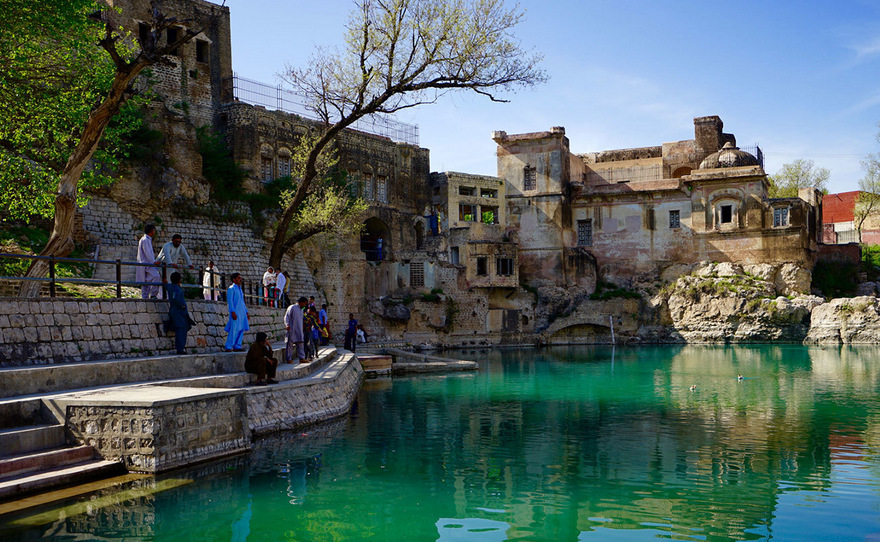
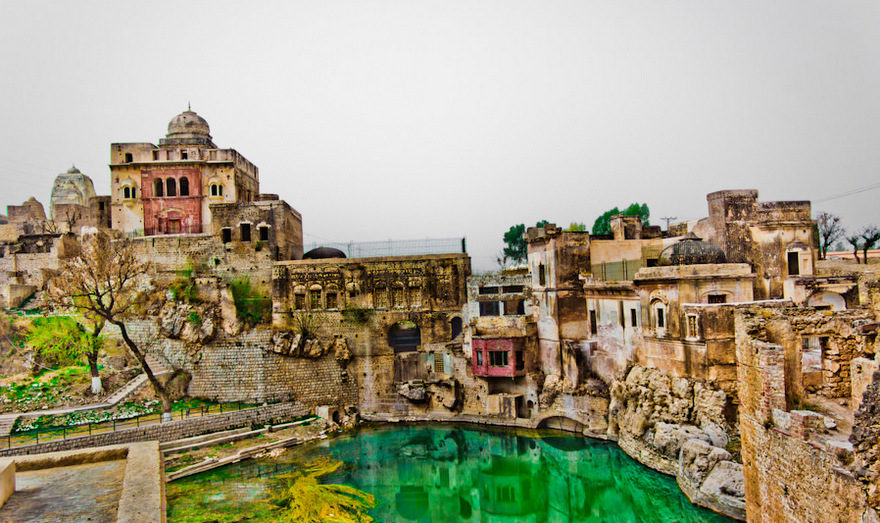
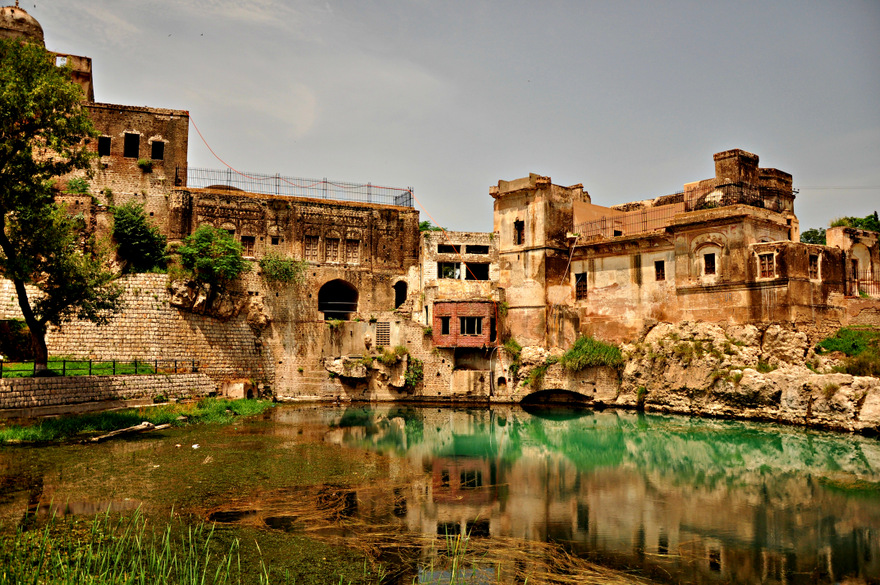
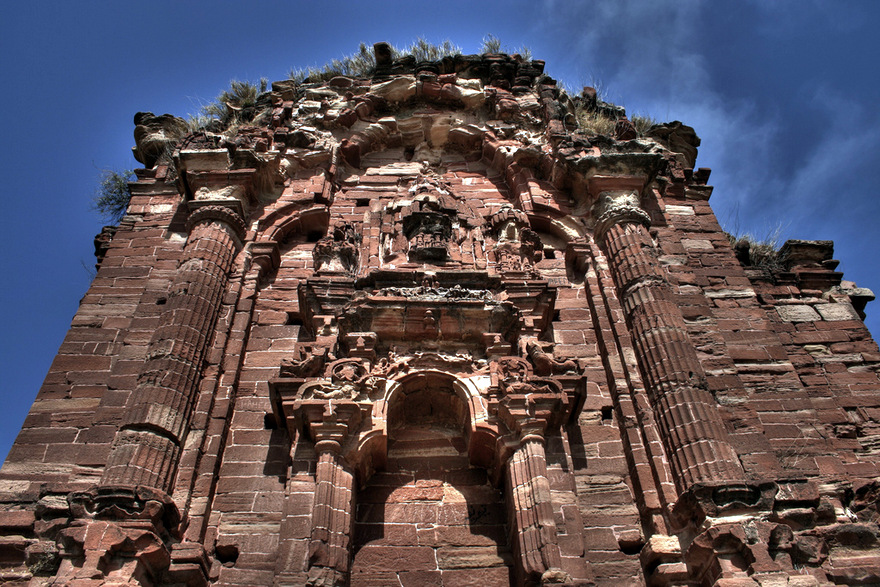
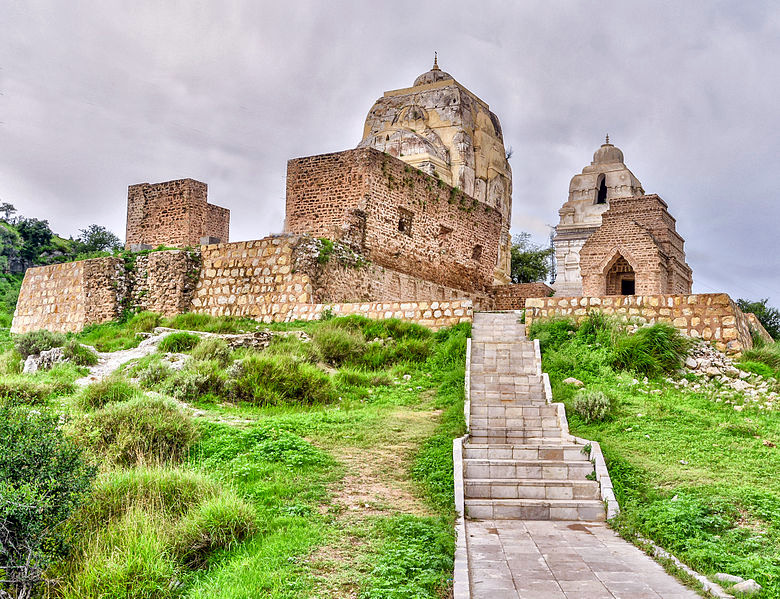
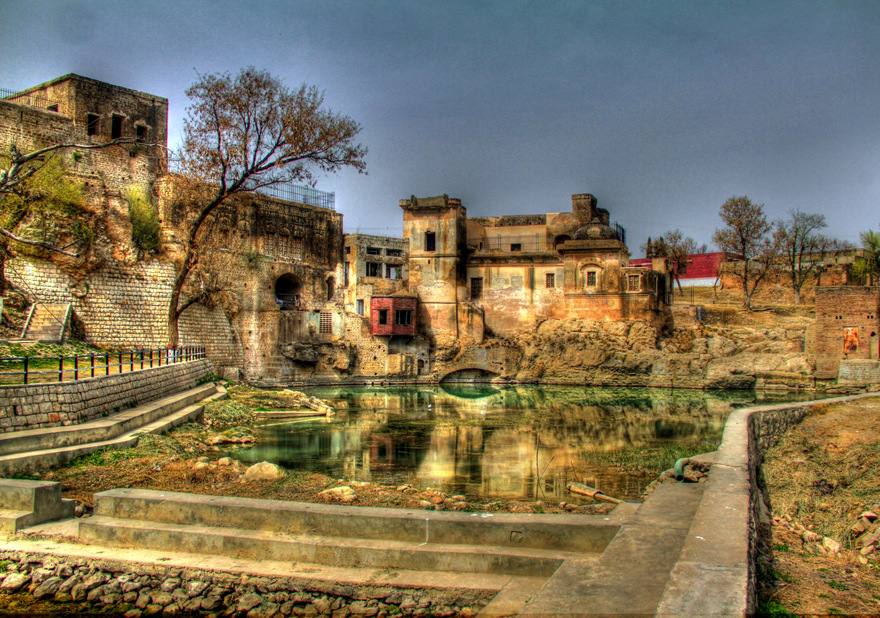
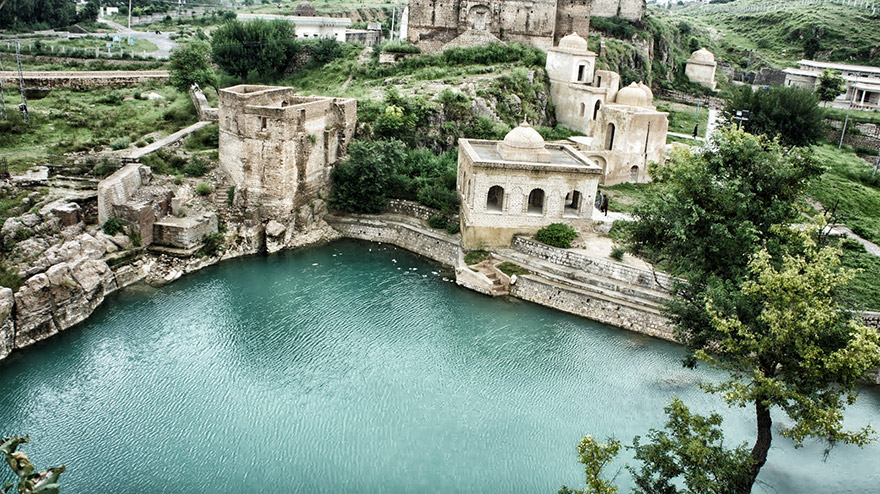
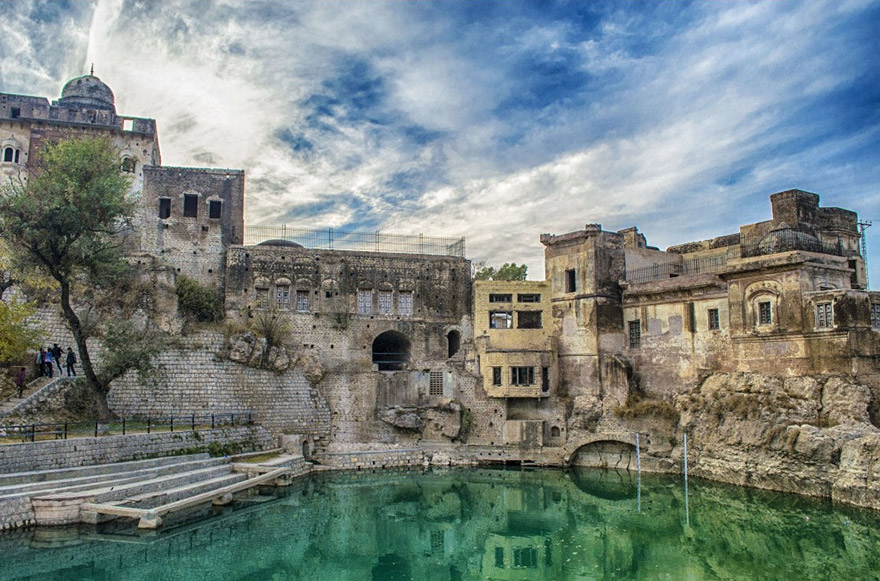
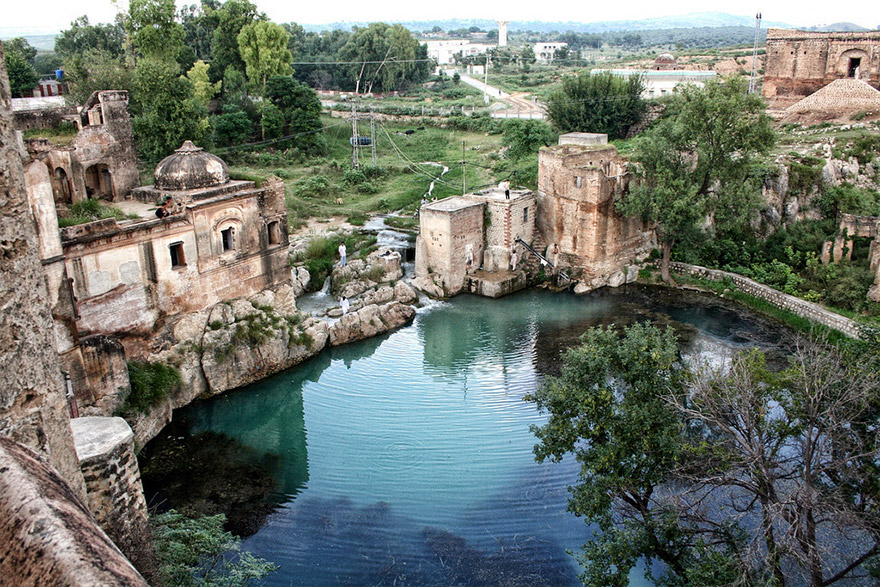





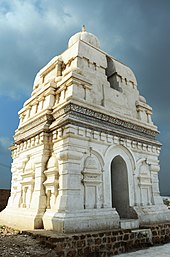



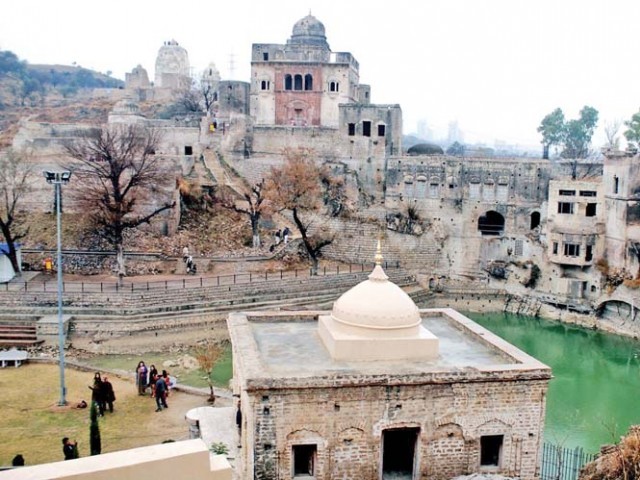
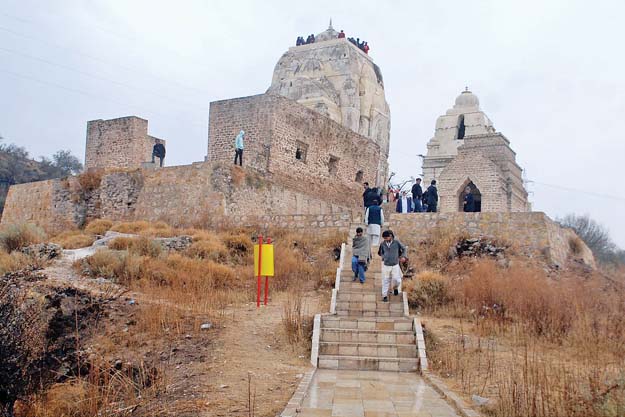
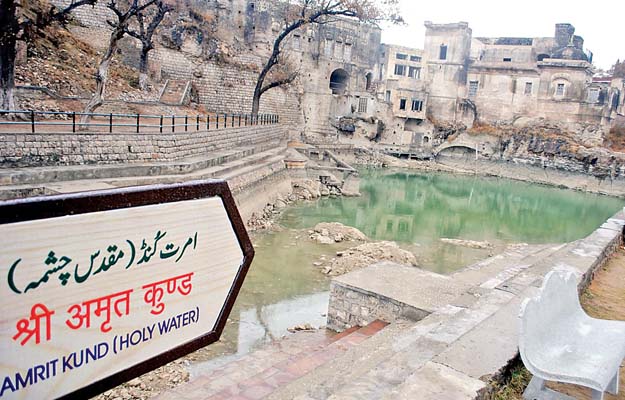
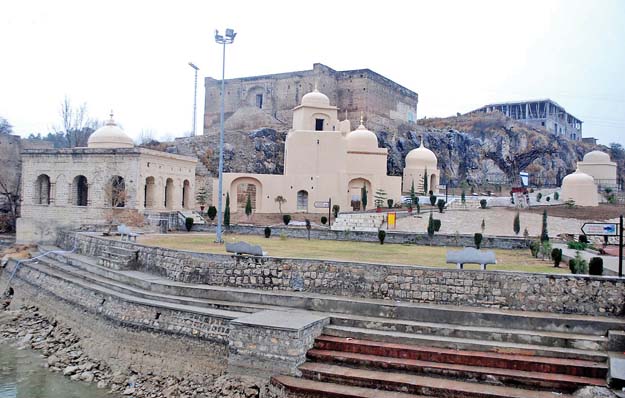













 Located
500 meters off the coast of Vavathurai, this memorial is built on a
massive rock where the sage meditated to attain enlightenment. Another
highlight of the place is the merging point of the three large water
bodies of the Indian subcontinent – the Arabian Sea, the Bay of Bengal
and the Indian Ocean, that can be seen from the rock.
Located
500 meters off the coast of Vavathurai, this memorial is built on a
massive rock where the sage meditated to attain enlightenment. Another
highlight of the place is the merging point of the three large water
bodies of the Indian subcontinent – the Arabian Sea, the Bay of Bengal
and the Indian Ocean, that can be seen from the rock. Inside
the memorial, there is a meditation hall or Dhyan Mandapam where
visitors gather and meditate. The place is also known to have a distinct
aura of peace and tranquility that many tourists have claimed to have
experienced. A couple of hours meditation in the Dhyan Mandapam are all
it takes to attain solitude.
Inside
the memorial, there is a meditation hall or Dhyan Mandapam where
visitors gather and meditate. The place is also known to have a distinct
aura of peace and tranquility that many tourists have claimed to have
experienced. A couple of hours meditation in the Dhyan Mandapam are all
it takes to attain solitude.







